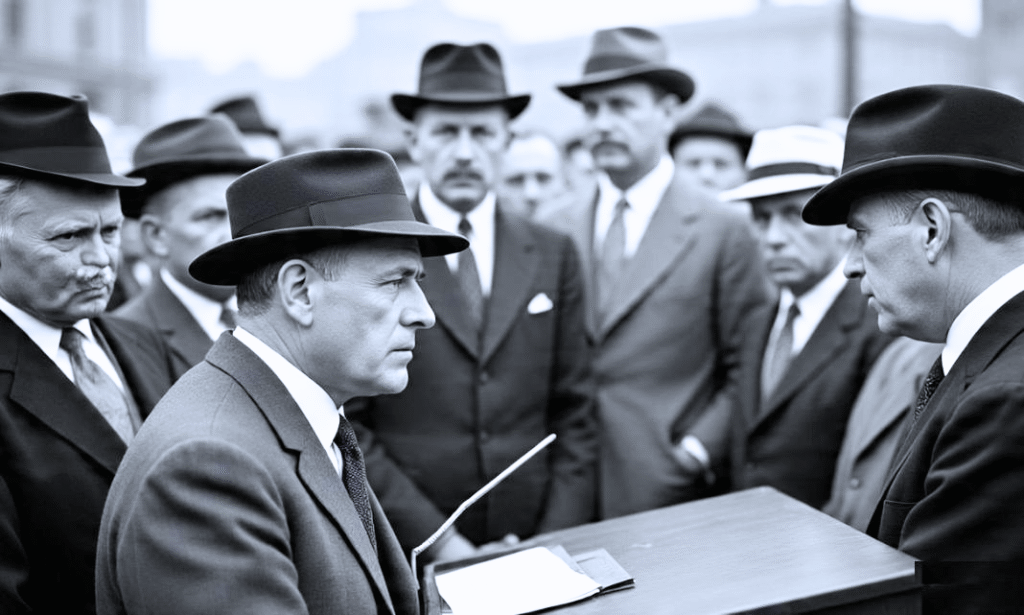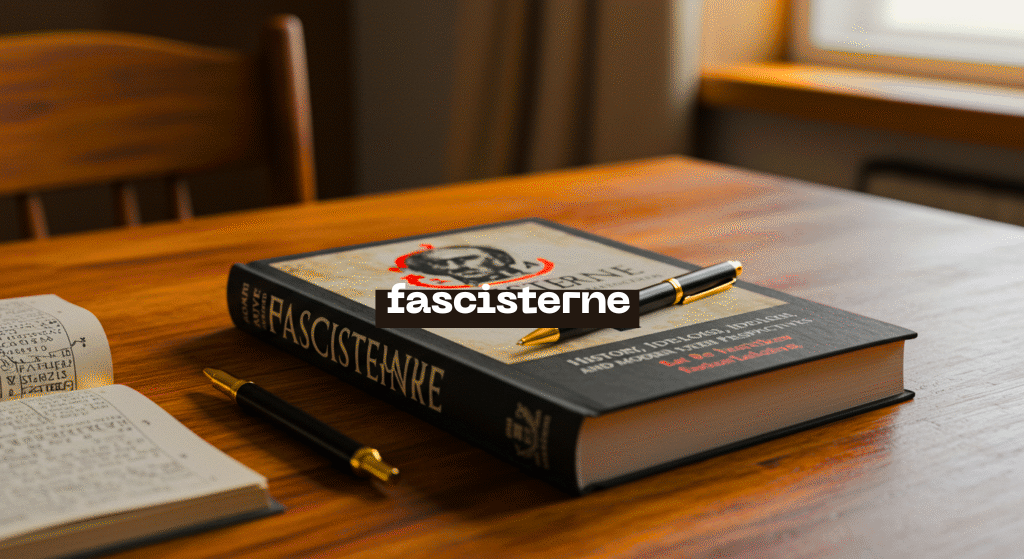The term “fascisterne” translates literally to “the fascists” in Danish and refers to individuals and groups in Denmark who embraced far-right authoritarian ideologies during the early to mid-20th century. Unlike the well-known fascist movements in Germany and Italy, the Danish variant was smaller and less influential, yet it played a notable role in shaping political thought and social divisions in Denmark at the time. The ideology behind fascisterne was rooted in extreme nationalism, authoritarianism, and a belief in hierarchical social structures, often coupled with antisemitism and xenophobia. While Denmark largely resisted fascist ideology on a national scale, the groups associated with fascisterne found footholds, particularly during the volatile years leading up to and during World War II. Their history provides a crucial window into understanding how extremist ideologies can infiltrate societies even with strong democratic traditions and the long-lasting implications of collaboration with oppressive regimes.
Origins and Rise of Fascism in Denmark
The Danish National Socialist Workers’ Party, or Danmarks Nationalsocialistiske Arbejderparti (DNSAP), was founded in 1930, inspired by the rise of Adolf Hitler’s NSDAP in Germany. The party, led by Frits Clausen, adopted many of the same symbols, rhetoric, and political tactics as the German Nazis, including militaristic displays, nationalist propaganda, and the demonization of minority groups. In its early years, the party struggled to gain a significant foothold among the Danish population due to strong democratic traditions and resistance from mainstream political parties. Nevertheless, it attracted a segment of citizens, particularly in North Schleswig, who were drawn to its promises of national unity, economic stability, and the assertion of Danish pride. The DNSAP’s platform, while focused on local Danish issues, reflected the broader European wave of fascist ideologies that swept across the continent, highlighting the interconnectedness of these movements and the danger they posed even in smaller nations.
Fascisterne Bio Table
| Attribute | Details |
|---|---|
| Name | Fascisterne (The Fascists) |
| Country | Denmark |
| Founded | 1930 |
| Founder/Leader | Frits Clausen |
| Political Alignment | Far-right, Fascist, National Socialist |
| Key Activities | Recruitment for Waffen-SS, collaboration with Nazi Germany, spreading fascist ideology |
| Era of Influence | 1930s–1945 |
| Post-War Status | Disbanded; some members prosecuted, others reintegrated into society |
| Modern Legacy | Influences fringe neo-Nazi groups like DNSB |
| Ideology | Extreme nationalism, authoritarianism, antisemitism, suppression of opposition |
| Historical Significance | Served as a cautionary example of extremist ideology infiltrating democratic societies |

Collaboration During Nazi Occupation
The outbreak of World War II and the subsequent occupation of Denmark by Nazi Germany in 1940 created an environment where the fascisterne could act on their ideology. The DNSAP aligned itself with the occupying forces, supporting Germany’s military and political agenda in Denmark. Members of fascisterne participated in recruiting volunteers for the Waffen-SS and the Frikorps Danmark, a unit of Danish soldiers who fought alongside German forces on the Eastern Front. This collaboration is considered one of the darkest periods of Danish modern history, as these volunteers were involved in combat operations that often entailed severe brutality. Many Danes viewed these collaborators as traitors who had betrayed the values of their nation and undermined the resistance efforts that sought to protect Denmark’s sovereignty and its citizens. The collaboration of fascisterne during the occupation not only caused immediate human suffering but also left deep social scars, creating divisions between those who resisted and those who actively supported Nazi policies.
Post-War Consequences and Legacy
After the liberation of Denmark in 1945, the country faced the difficult task of reckoning with those who had collaborated with the Nazi occupiers. Fascisterne, as a movement, largely disbanded, but the individuals involved faced varying degrees of accountability. Some collaborators were prosecuted and punished, while others managed to reintegrate into society, even holding positions in post-war governance or business. Historical estimates suggest that thousands of Danes were implicated in direct collaboration, although precise numbers are difficult to confirm. The post-war trials and societal reckoning left a complex legacy, with lingering debates over justice, forgiveness, and how to address the moral failures of the occupation era. For decades, the story of fascisterne remained a cautionary tale, a reminder of how extremist ideologies could take hold even in societies that valued democracy and freedom, particularly under conditions of fear, propaganda, and foreign occupation.
Modern-Day Reflections
The ideological legacy of fascisterne continues to echo in contemporary Denmark, though the movement itself no longer exists. Neo-Nazi groups, such as the National Socialist Movement of Denmark (DNSB), have emerged, often drawing inspiration from the historical fascisterne while remaining on the fringes of political life. These modern groups typically fail to achieve significant political influence but serve as stark reminders that extremist ideologies can persist across generations. Public education, historical awareness, and active resistance to authoritarian rhetoric remain essential tools in preventing a resurgence of such movements. Danish society today often reflects on the history of fascisterne as part of broader discussions on tolerance, human rights, and the ongoing responsibility to confront prejudice and extremist thought wherever it appears.
Conclusion
The story of fascisterne is a deeply human one, illustrating both the vulnerabilities and resilience of Danish society. While the movement represented a dark chapter in Denmark’s history, the response to it—through resistance, accountability, and education—demonstrates the enduring strength of democratic values and the importance of collective moral responsibility. Understanding the rise, collaboration, and legacy of fascisterne is crucial for both historians and modern readers, offering lessons about vigilance, empathy, and the consequences of ideological extremism. Denmark’s experience with fascisterne reminds us that freedom and democracy require constant attention, and that societies must actively engage with history to prevent the repetition of past mistakes.
FAQs
What does “Fascisterne” mean?
“Fascisterne” is Danish for “the fascists,” referring to individuals or groups who supported fascist ideologies in Denmark.
When did Fascisterne rise in Denmark?
The movement gained prominence in the 1930s with the formation of the DNSAP, inspired by German Nazism.
Did Fascisterne collaborate with Nazi Germany?
Yes, many members supported the German occupation, recruiting volunteers for the Waffen-SS and Frikorps Danmark.
What happened to Fascisterne after World War II?
Most members were disbanded, some were prosecuted, while others reintegrated into Danish society with minimal consequences.
Are there modern groups linked to Fascisterne?
Neo-Nazi groups like DNSB echo some of the historical ideology, though they remain marginal in Denmark today.


